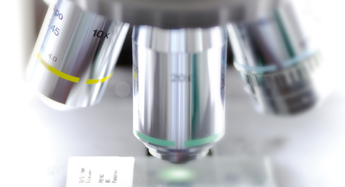Where is the new medical devices legislation?
February 2015
On 26 September 2012, the European Commission published new legislation in the form of two draft Regulations to govern the regulation of medical devices and in vitro diagnostic medical devices in Europe. The Regulations are intended to replace the Directives which currently provide the regulatory framework (see "The regulation of medical devices").
In its proposals the Commission elected for evolution, rather than revolution, of the current system. The key aims of the revisions include improving harmonization between Member States and restoring public confidence in the wake of the PIP scandal, while still ensuring prompt access to innovative devices for patients and medical professionals. The overarching theme of the new Regulations, therefore, is a tightening up of the regulatory framework, rather than a complete revision.
The key elements of the initial proposals were:
- the new legislation will be in the form of regulations, and so will have direct effect in Member States. The current regime is based on directives, which the Commission say have been inconsistently implemented in Member States;
- Notified Bodies will have their position and powers clarified and enhanced, while being subject to strengthened supervision by Member States. New powers will include the right to undertake unannounced inspections;
- greater transparency, including further development of the European databank on medical devices (Eudamed);
- improved traceability of devices in the supply chain, including a phased and risk-based introduction of UDI (Unique Device Identification);
- reinforced rules governing clinical evaluation throughout the life of the device, including the introduction of the concept of a "sponsor";
- improved market surveillance and vigilance, as well as better co-ordination between national regulators;
- a new requirement for manufacturers to have a "qualified person" responsible for regulatory compliance;
- new rules for the reprocessing of single-use medical devices; and
- the introduction of a new expert group (the Medical Device Coordination Group) which will be able to invoke a "scrutiny mechanism". The MDCG will have the power to review and comment on Notified Body assessments of high-risk medical devices before the device is put on the market.
But, two years on from publication of the proposals, many are asking what has happened to them.
In summer 2013, numerous amendments to the Commission's proposals were proposed and voted on one by one by Parliament's Committee on the Environment, Public Health and Food Security (ENVI). This included the controversial introduction of a pharma-like pre-marketing authorisation for certain high-risk devices.
Following a plenary vote in October 2013, the European Parliament concluded its first reading on the legislation in April 2014, with the adoption of its legislative resolutions on the two proposals. Then, on 5 November 2014, after the European elections, ENVI instructed its Rapporteurs to negotiate with the Council in order to reach agreement on the two proposals. At the date of writing, the Council is still attempting to agree its position on what the proposals exactly should contain.
 The complexity of the proposals and Parliament's resolutions from last year, mean there is a great deal that must still be agreed between Council and Parliament and within Council itself. In the latter respect, Council has noted outstanding issues in a progress report, including the following:
The complexity of the proposals and Parliament's resolutions from last year, mean there is a great deal that must still be agreed between Council and Parliament and within Council itself. In the latter respect, Council has noted outstanding issues in a progress report, including the following:
aesthetics devices: there is disagreement amongst the Member States on whether aesthetic devices (devices that have cosmetic purposes rather than medical) should be included under the scope of the medical devices Regulation;
ingested products: the current medical devices proposal includes certain substances or combinations of substances intended to be ingested, inhaled or administered rectally or vaginally (called "ingested products"). These devices are currently classified as high risk devices ("Class III"). Difficulties have been encountered on deciding where the line is to be drawn between medical devices and medicinal products for such substances, although it has been agreed that they must fall under the regulation of one or the other;
re-processing of single-use devices: the Commission would like re-processing of single-use devices to make them suitable for further use. This is not accepted by some Member States and the Italian presidency wanted a compromise that allows Member States to prohibit re-processing under national law but if not prohibited applies minimum harmonised rules;
the unique device identification system: the Commission wants manufacturers to fit their devices with a Unique Device Identification (UDI) which allows for traceability. How this would work needs to be agreed;
mechanisms for surveillance and appointment of the Notified Bodies responsible for conformity assessment: the main subject of controversy is whether the detail of these requirements should be contained in the legislative provisions or left for guidelines;
scrutiny mechanism for certain high-risk devices: most Member States consider that the scrutiny procedure as proposed by the Commission is not possible to apply. Many also argue that a scrutiny mechanism before devices are placed on the market is not necessary. However, some delegations do want to include a "pre-market scrutiny mechanism" for implantable devices in the highest risk class "Class III devices"; and
role of expert panels and reference laboratories: while most Member States agree that there is a need for laboratories to test the predictive powers of in vitro diagnostic medical devices, few consider the same need for medical devices. Instead, they favour the establishment of expert panels with competence for certain groups of devices.
On 19 June 2015, the Council announced that it had agreed the substance of its negotiating stance on both Regulations for medical devices and in vitro diagnostic medical devices, in what it describes as a step towards providing a mandate to start talks between the next Presidency (Luxembourg) with the European Parliament and to attempt to reach an agreement. However, the text agreed by Council may still be rejected by Parliament in a second reading, or modified and passed back to Council for further agreement. Please see the July 2015 edition of Synapse (available Monday, 20 July) for further detail on the Council's agreed text.
 There is thus still a long way to go before the reforms proposed by the new medical devices legislation come into force. And, in an area where technology is developing fast (see "Mobile medical apps in Europe" and "Wearable technology in the medical devices sector") there would at times seem to be the problem that legislators cannot move fast enough to keep up.
There is thus still a long way to go before the reforms proposed by the new medical devices legislation come into force. And, in an area where technology is developing fast (see "Mobile medical apps in Europe" and "Wearable technology in the medical devices sector") there would at times seem to be the problem that legislators cannot move fast enough to keep up.
If you have any questions on this article or would like to propose a subject to be addressed by Synapse please contact us.




Paul England
Paul is a senior associate and professional support lawyer in the Patents group based in our London office.
"...in an area where technology is developing fast - mobile medical apps and wearable technology - there would at times seem to be the problem that legislators cannot move fast enough to keep up."

